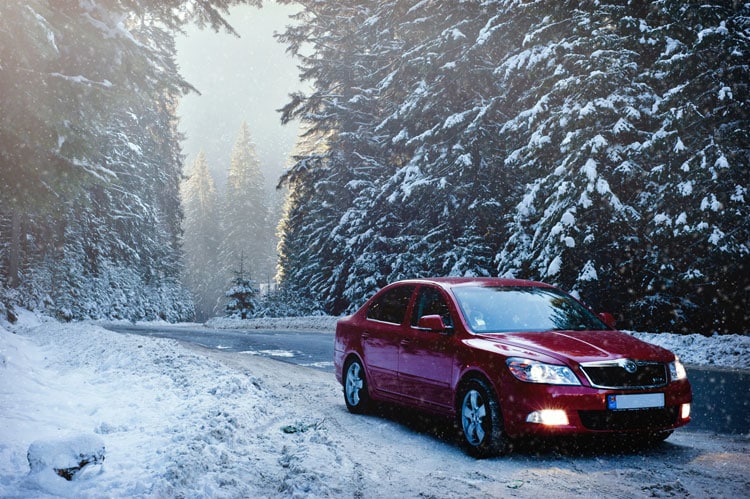We love snow, it looks beautiful and makes for a perfect picture but if you are driving in it, you must be careful. Here are some top tips for driving in adverse weather conditions…
Driving in adverse weather conditions can make even the most confident and experienced of drivers feel unsafe and nervous, so now we are in the midst of winter, it is vital for motorists to be aware of how they can take extra care and stay safe on the roads. With this in mind, read on for a few safety tips for driving in adverse weather conditions.
You may also like: Is 2021 The Year Of The Accessories?

Remove Snow & Ice
First, you should always give yourself some extra time to remove and snow and/or ice from the vehicle. The windows, in particular, needs to be completely clear in order for full visibility, which can take some time so you always need to check the car 10 minutes or so before you plan on setting off.
Correct Tyre Pressure
A high percentage of motorists are guilty of not checking their tyre pressure as often as they should – ideally, this will be weekly in winter and always before a long drive. Tyres which are not inflated to the manufacturer’s recommendation will be both unsafe and inefficient, so you need to keep these topped up in order to stay safe and to improve the performance of the vehicle. You also need to check the tyre tread depth – the legal minimum is 1.3mm but it is recommended that you have at least 3mm for winter.
Give Yourself Plenty of Time
In addition to giving yourself time to remove snow and ice from the car, it is also smart to allow yourself plenty of time to get to your destination so that you are not rushed. You often need to travel slower during the winter months as stopping distances can be 10 times longer in bad weather, so set off with plenty of time to spare is smart and should allow you to arrive safely.
The Power of Second Gear
Setting off can be a challenge when you are battling snow and ice, but you might find that starting in second gear will make life much easier and could help you to get out of any tricky spots. A 4×4 is particularly helpful during the winter months, so you could even look to personal leasing to find a vehicle which is well-suited to winter driving.
Winter Emergency Kit
Motorists should also have a winter emergency kit in the car, which will provide them with helpful items if they breakdown or have an accident. This should include items such as:
- First-aid kit
- Snow shovel
- Windows scraper
- De-icer
- Spare clothes
- Blanket
- Warning triangle
- Food and drink
- Mobile phone charger
Hopefully, the information in this post will help you to feel more confident about driving in adverse weather conditions and help you to stay safe. It is difficult driving in winter and it should be avoided when the conditions are too bad if possible, but when you do have to make the trip these tips should come in useful.

